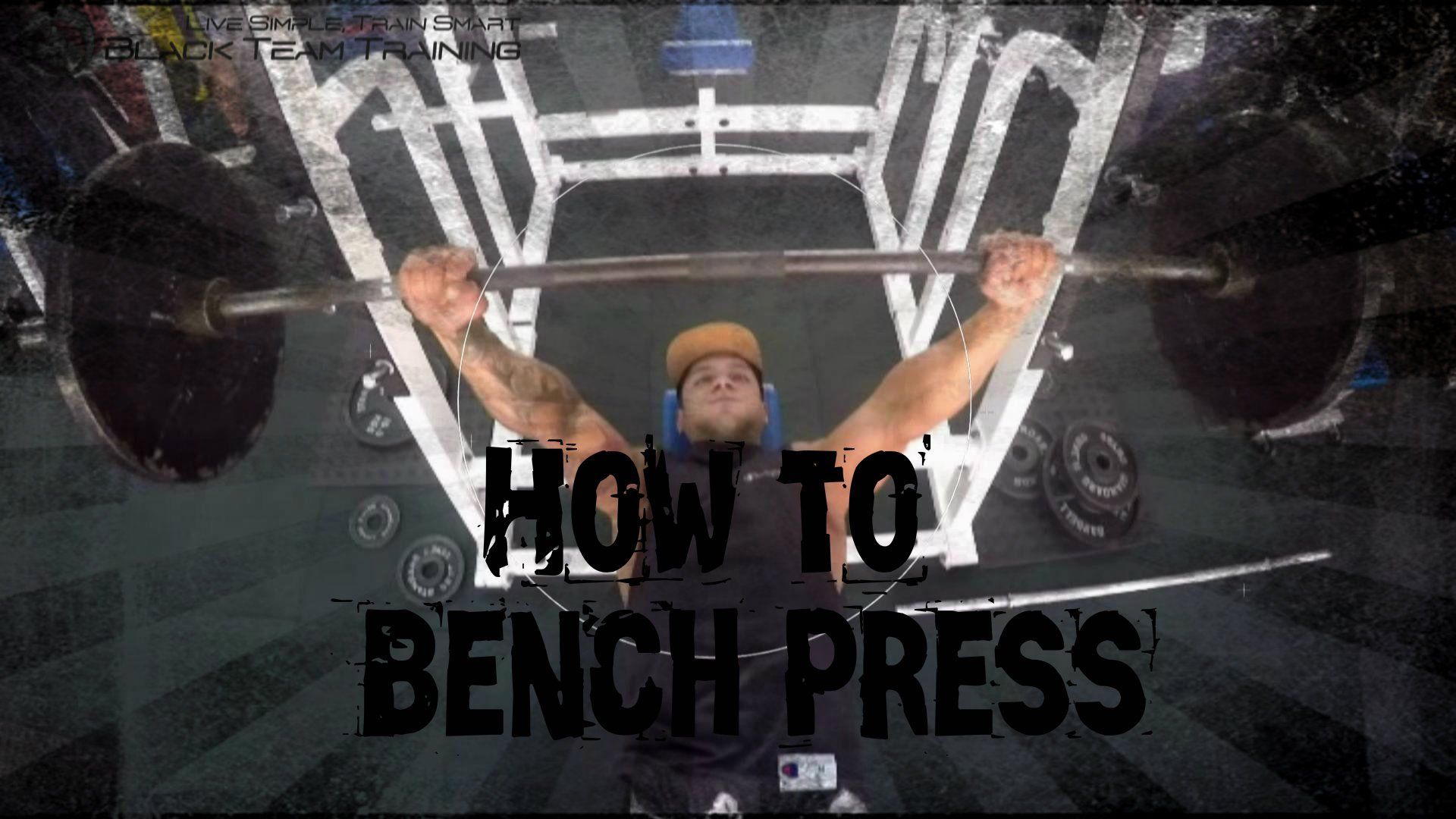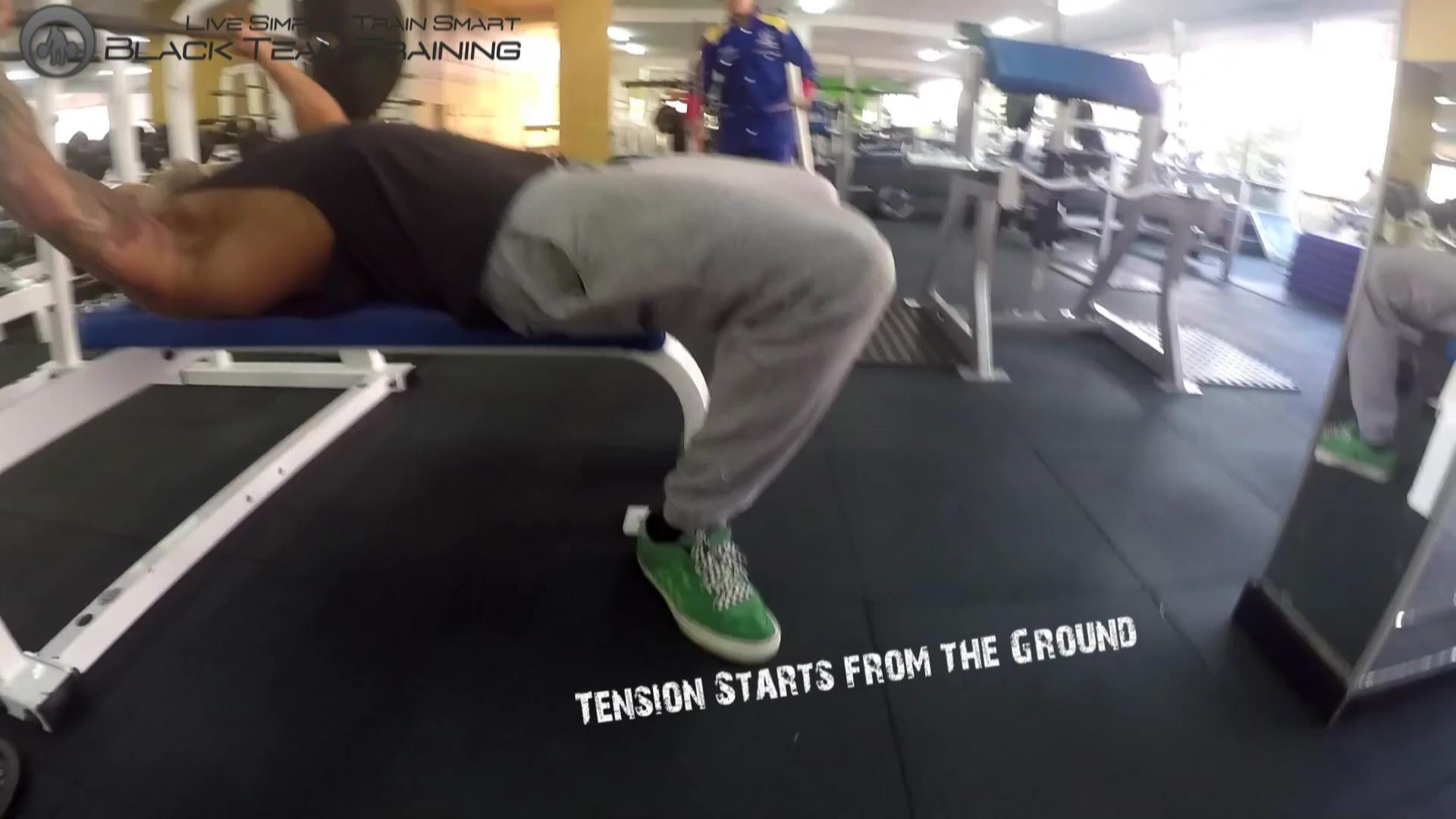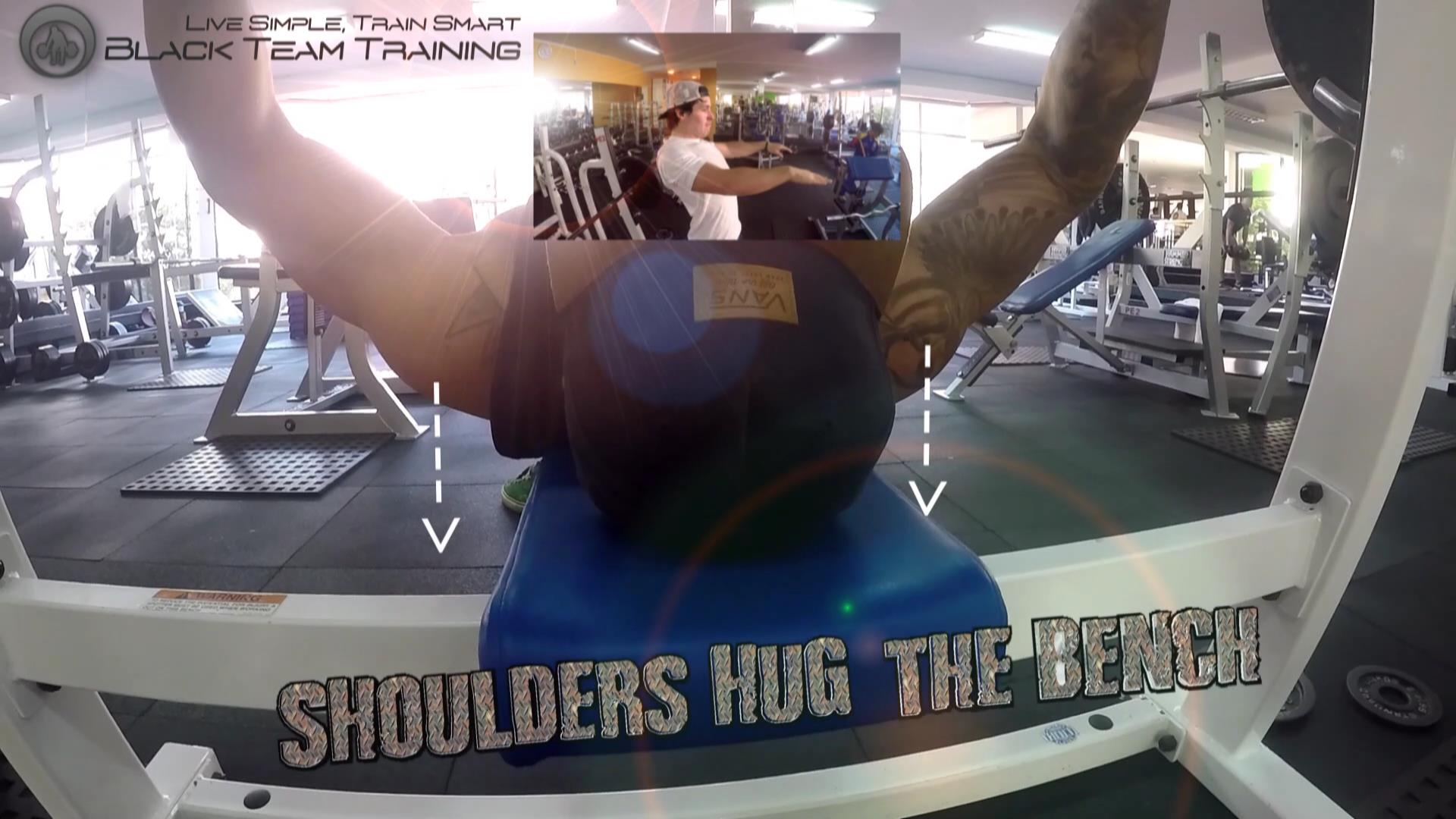Blog Post
How to Bench Press (Pt. 1)
- por Cone Escobari
- •
- 16 ene, 2017
- •
The Black Guide to Pressing more Weight

The Bench Press has to be the most popular Upper Body exercise in the history of mankind.
Whether you are completely new to this exercise, or you've been doing it for years, it can never hurt to get your technique in check.
In fact, the oposite could be true, and if you don't check your technique... well, that can hurt.
Let's take a look at this exercise from the set up
Whether you are completely new to this exercise, or you've been doing it for years, it can never hurt to get your technique in check.
In fact, the oposite could be true, and if you don't check your technique... well, that can hurt.
Let's take a look at this exercise from the set up
The Set Up
Most problems we've seen start from the set up, before the unrack.
The first thing to note is that your towel is not anywhere near the bench. So, number one mistake to avoid is to put your towel on the edge of the bench, right under your head or upper back.
The first thing to note is that your towel is not anywhere near the bench. So, number one mistake to avoid is to put your towel on the edge of the bench, right under your head or upper back.

Having a towel under your head and upper back is a bad idea
because you need to be as stable as possible under a loaded bar, and you will be using your whole entire body to create tension as you press up.
You don't want to be sliding up and down during the lift, because you will either lose tension from the ground or the bar will crash on the rack as it comes up.
...just remember to wipe after you are done using the bench. The world thanks you.
You don't want to be sliding up and down during the lift, because you will either lose tension from the ground or the bar will crash on the rack as it comes up.
...just remember to wipe after you are done using the bench. The world thanks you.
Tension Starts from the Ground

If you could get anything out of this guide, please let it be this point.
The Bench Press is a full body lift.
We've seen personal trainers try to reinvent the wheel by teaching their victims to press with feet on the air or feet on the bench, but pressing with your feet anywhere but on the ground is a terrible idea because, it either takes away leg drive from the equation or teaches you the bad habit of lifting your butt of the bench (which in competition, is called "bridging" and not allowed).
So, put your feet firm on the ground. Some people like their heels in contact with the ground and others will keep their heels up. Experiment with both of those options, and see which one feels better for you.
Also some people like their shins a little bit more perpendicular to the floor, and others will bring their feet under their glutes. Again, experiment and see which of those positions will have you creating the most tension and better leg drive.
The Bench Press is a full body lift.
We've seen personal trainers try to reinvent the wheel by teaching their victims to press with feet on the air or feet on the bench, but pressing with your feet anywhere but on the ground is a terrible idea because, it either takes away leg drive from the equation or teaches you the bad habit of lifting your butt of the bench (which in competition, is called "bridging" and not allowed).
So, put your feet firm on the ground. Some people like their heels in contact with the ground and others will keep their heels up. Experiment with both of those options, and see which one feels better for you.
Also some people like their shins a little bit more perpendicular to the floor, and others will bring their feet under their glutes. Again, experiment and see which of those positions will have you creating the most tension and better leg drive.
Squeeze your Glutes and Arch Your Lower Back
Tension is the name of the game. You drive it from the ground, up through your tightly squeezed glutes and then through your lower back.

Arching your lower back is key to keep tension flowing all the way up to the bar, and will also have you pushing your chest and ribcage up to the ceiling. Both of this things are good. This way you shorten the distance the bar has to travel.
Less distance traveled, less work you need to do, the more weight you can press.
As you squeeze your glutes hard, remember they have to remain in contact with the bench.
Less distance traveled, less work you need to do, the more weight you can press.
As you squeeze your glutes hard, remember they have to remain in contact with the bench.
Grip the Bar Correctly and Start with Your Eyes Ahead of the Bar

Grip the bar with a vice crushing grip. Your hand is were tension transfers to the bar, so crush it as if you'd like to turn the bar into dust inside your hand.
Note that your thumb is wrapped over your index finger and not anywhere else. This is the only way to grab the bar for the bench press. Any other variation is simply dangerous and should be avoided.
How wide you grip the bar will depend on your body dimensions, but most people start by gripping the bar too wide!
You may press more weight with a wider grip, but know that you'll be putting a lot more stress on your shoulders and elbows. This is exactly how people end up with beaten joints through repetitive years of bench pressing.
The safest width is closer than you think, and will have your hand landing inside the ring of the bar (that's the smooth surface of the bar shown in the first picture above).
At this point, you haven't unracked the bar yet, so if you look straight up, your sight will be ahead of the bar.
Note that your thumb is wrapped over your index finger and not anywhere else. This is the only way to grab the bar for the bench press. Any other variation is simply dangerous and should be avoided.
How wide you grip the bar will depend on your body dimensions, but most people start by gripping the bar too wide!
You may press more weight with a wider grip, but know that you'll be putting a lot more stress on your shoulders and elbows. This is exactly how people end up with beaten joints through repetitive years of bench pressing.
The safest width is closer than you think, and will have your hand landing inside the ring of the bar (that's the smooth surface of the bar shown in the first picture above).
At this point, you haven't unracked the bar yet, so if you look straight up, your sight will be ahead of the bar.
Pinch Your Shoulders Back
Under the theme of shortening the range of motion, you will be pinching your shoulders back and keeping them there throughout the entire lift.

This is were the cue "hug the bench with your shoulders" is useful. This way you get even tighter on the bench, keep pushing your chest up, and press from a stable position.
If you are bench pressing with a spotter, tell him to "handover" the bar, which simply means he'll be unracking the bar. This way you can keep your shoulders in this stable position, and not have to re-set up after unracking.
If you are benching by yourself, then try to use a bench with no J hooks, so you can slide the bar over, without losing position.
If you are bench pressing with a spotter, tell him to "handover" the bar, which simply means he'll be unracking the bar. This way you can keep your shoulders in this stable position, and not have to re-set up after unracking.
If you are benching by yourself, then try to use a bench with no J hooks, so you can slide the bar over, without losing position.
Unrack with Locked Elbows and Bring the Bar Over Your Chest
If you fail to unrack with locked elbows, you are already losing power before the lift even began. Elbows unlocked means the tension is either already on your triceps or shoulders.
Lock your elbows, and then pull with your lats, to bring the bar straight over your chest. You should feel your lats firing just like you would in a straight arm lat pulldown.
Lock your elbows, and then pull with your lats, to bring the bar straight over your chest. You should feel your lats firing just like you would in a straight arm lat pulldown.

The bar starts in line with your forearms, which are perpendicular to the floor.
Look at the bar, but don't follow the bar as it travels down with your eyes, because this will have you raising your head off the bench and putting your neck in a less-than-safe position.
Simply keep your sight up and think about pushing the bar back to the same spot on every rep.
Look at the bar, but don't follow the bar as it travels down with your eyes, because this will have you raising your head off the bench and putting your neck in a less-than-safe position.
Simply keep your sight up and think about pushing the bar back to the same spot on every rep.
From this point you'll be taking in a big air, and letting just a little bit out to create even more tension throughout your upper body, before starting to lower the bar to your chest.
We will be covering the actual press on a next blog post, so please leave your questions or comments below.
We leave you with a video we use to coach the bench press, taken straight from our training app, here:
We will be covering the actual press on a next blog post, so please leave your questions or comments below.
We leave you with a video we use to coach the bench press, taken straight from our training app, here:
Compartir
Tweet
Compartir
Correo
Política de Privacidad | Descargo de Responsabilidad
BLACK TEAM TRAINING LLC, 8 The Green Suite A Dover, DE 19901, USA